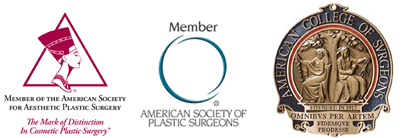It is important to read the general postoperative instruction sheet also. These plastic surgery postoperative instructions or cosmetic surgery postoperative instructions are meant to be as thorough and complete as possible. However please don’t hesitate to call for any questions or concerns!
“Simple Yet Strict”
Recovering from body, thigh or buttock lift surgery can be surprisingly easy. Follow the simple instructions provided by Dr. Saunders. Yet these instructions are strict. They should be followed closely. These instructions are based on decades of experience. Please follow the instructions carefully and maximize your chance of healing uneventfully! No smoking, nicotine patches or nicotine gum until further notice! This is extremely important!
Bandages:
It is normal to have some bloody drainage. It is frequently on the sides and should be expected. The bandages are placed at the time of surgery and do not need to be replaced until your first shower. If they are excessively wet they can be changed. Use clean hands and do not touch the incision or where the drainage tubes go in the skin.
Drains:
Expect drainage around the tubes. It can be messy but is normal! The drains are very important and you will be taught how to take care of them. Initially they will be bloodier and will require emptying 3 to 5 times a day and, as the output diminishes, you can empty them two times a day. This is best done between 8 to 9 o’clock in the morning and 8 to 9 o’clock in the evening. Record on a piece of paper the amount in it. The metric system is printed on the side of the bulb to help with recording the amount. After dumping the fluid make sure you squeeze it before putting the valve back on. It needs to be compressed to provide suction. If you have drainage around the tubes, this is normal and gauze or clean washcloths can be applied for the drainage.
Pain pump:
The pain pump delivers lidocaine continuously for three days (or 72 hours). It is automatic and cannot be adjusted to increase rate. If you accidentally pull out one of the tubes, there is a white clip in the pouch to stop the flow of medication. Please call or text Dr. Saunders in the morning if this occurs.
Blood clot or DVT prevention:
Early ambulation is an important instruction to minimize blood clots in the legs. Early ambulation means getting up and walking around the house for approximately 10 min. at least six times a day. If there was thigh liposuction, make sure the garment or girdle is not tight and constrictive in any area, in particular above or below the knees. The garment should be smooth to avoid it bunching up and constricting in one location. Dr. Saunders recommends “the invisible bicycle” to minimize blood clots in the legs. Pump your legs like you are riding a bicycle to minimize blood clots. This can be done extremely frequently. Leg elevation is also important to minimize blood clots and to promote healing.
Showering:
Your first shower is 72 hours (or three days) after the completion of surgery. If your surgery was on a Wednesday, then your shower is typically Saturday. If your surgery was Thursday, the shower is typically Sunday By this time the incision has sealed and it is safe to shower. No bathing or soaking is allowed. At the shower all of the bandages are discarded along with the pain pump and the urinary catheter. You should be left with just the two drainage tubes. In the shower use mild soap and water. Do not remove any steri strips that might be applied. It is common to feel lightheaded at this first shower and it is recommended to have a sitting stool in the shower and someone to assist you. Should you feel lightheaded, sitting down and resting is usually appropriate for 5 or 10 minutes until you feel normal again. After the shower, no bandages are necessary for the incision. A white cotton T-shirt is recommended to provide padding and comfort beneath the binder or girdle. Gauze can be reapplied if a person desires this but the padding of the T-shirt is all that is recommended. The binder then is reapplied on top of the T-shirt. We fasten the drains to make sure they are secure by safety pinning them to the outside of the binder.
Activity:
Please see DVT prevention above. Please keep slightly bent at the waist to take tension of the incision. Although early ambulation is recommended avoid overdoing it. Twisting or turning from side to side causes a shearing motion of the skin on top of the muscles, and can increase drainage and delay healing. Dr. Saunders will advise you on when activity can be increased.
Medications:
The antibiotics are mandatory. If you are having significant nausea and vomiting it is usually the pain medicine. Often Tylenol or Motrin can be used if pain is mild. This is recommended and will significantly help patients who are suffering from nausea and vomiting. The pain pump usually works extremely well and provides great comfort.
Dr. Saunders’ cell phone 302-584-8407 (texting preferred)


